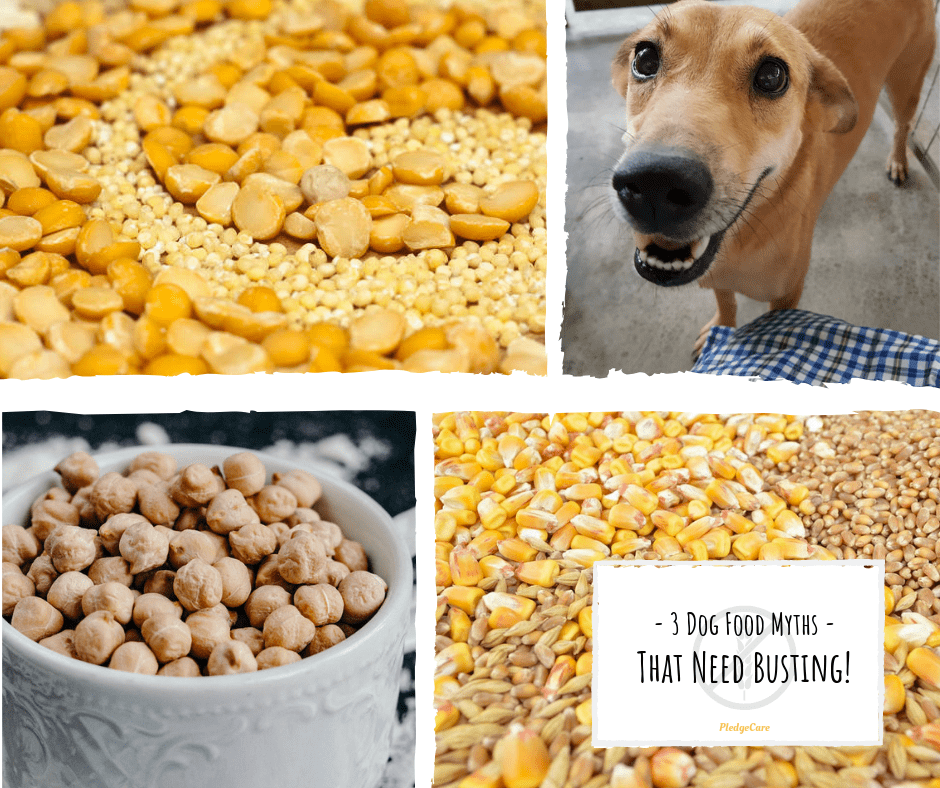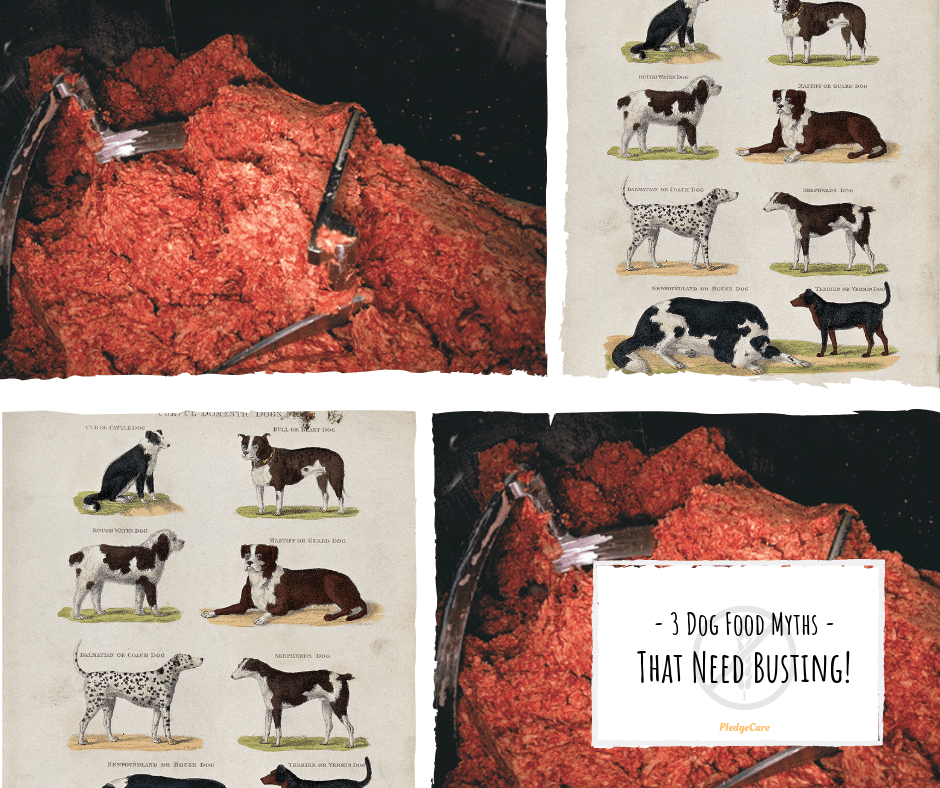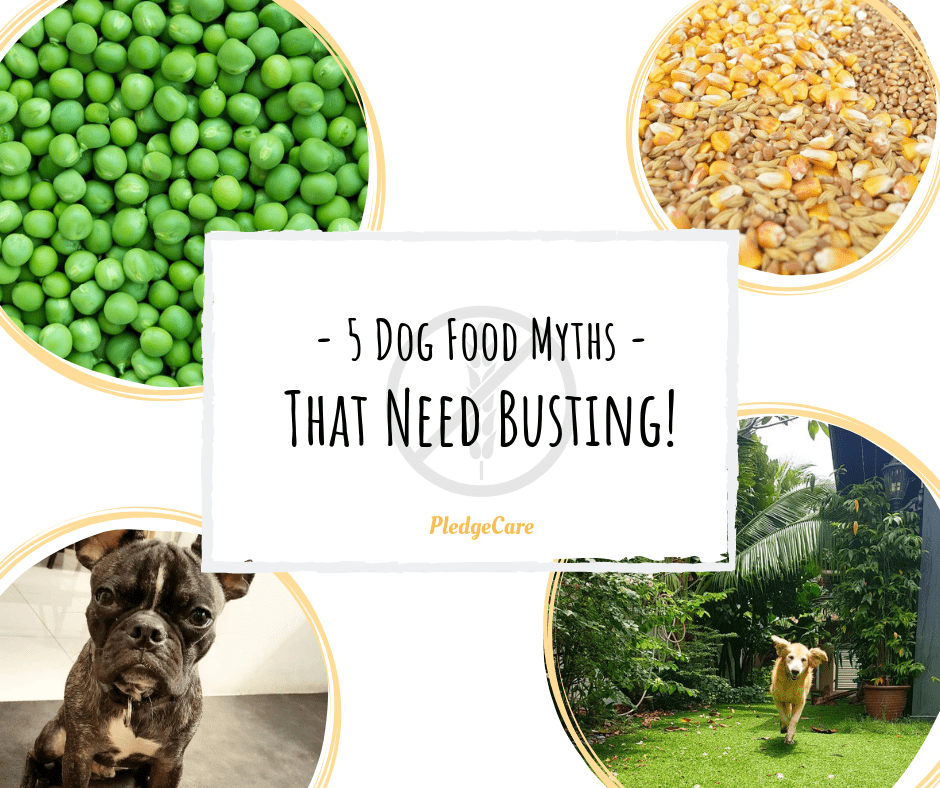Your dog’s diet is key to strong health. But in an industry riddled with vague claims and false marketing statements it can be almost impossible to choose the right food for your pup.
What’s true and what’s not true? Don’t worry, we’ll help you on the way by busting 5 common dog food myths. Let’s get to it:
1. Dog food myth; “High protein diets can cause kidney failure in dogs.”
Many dog parents are convinced that their pups are at high risk of developing kidney problems if they feed them with a high protein diet.
But don’t worry; In healthy dogs, a high protein diet is not a threat to health! Absorbed proteins are used for energy and unabsorbed excess protein will be excreted as by-products.
A source suggests that the myth can be a result of the high inclusions of plant products, like corn and wheat, in some pet foods.
Plant products contain protein but don’t supply the amino acids dogs need. Typically, these poor protein sources can be difficult to digest and do more harm than good.
So all in all, it’s important to make sure that your pup gets his protein from a solid protein source like fresh chicken meat. In case you’re looking for dog foods with fresh meat you can check out our online store.
Now, let’s look at the next myth:

2. Dog food myth; “A Grain-Free diet is always better for my dog”
You have probably heard this before.
Grain-Free diets have grown steadily in population over the past years. But are grain-free diets necessarily better for dogs, and is there any scientific backing to the claim? Let’s dig a little deeper into that:
Allergies are a hot topic when it comes to grain-free diets. It’s easy to come across articles and statements that claim that all types of grains are more likely to cause an allergic reaction.
Generally speaking, dogs are allergic to certain foods only if they have a genetic predisposition for it.
But note should be taken that some dog food companies formulate foods that contain more than 50% carbohydrates – which may or may not be of low-quality sources. This can trigger allergic reactions.
“Grain-free” doesn’t mean carbohydrate-free
This is an important point.
It’s easy to associate grain-free to carbohydrate-free. Not to say that carbohydrates are bad. The problem arises when high quantities of carbohydrates are consumed by your dog.
Some pet food manufacturers may include large amounts of carbohydrates in their food. Even in cases where the food is labelled grain-free (P.S.: Potato, peas etc. aren’t grains).
We often associate grain-free with a notion of being “premium”. That may be why grain-free diets are even sold at a higher price than other foods.
Some companies utilize this to boost margins by charging a higher price for products that are high in fillers such as tapioca or potato. These ingredients are technically grain-free but definitely not the best choice for dogs!
So it’s more important to take note of the quality and amount of carbohydrates, rather than the type of carbs itself.
A few examples are brown rice and oats. They are popular in home-cooked diets for dogs and supported by most vets and dietitians – although being under the grain-family.
Puff, we hope you’re still with us even though it got a little technical. In case you’re interested in learning more about label tricks in the pet food industry you can click here. Coming up next, myth 3:

3. Dog food myth; “Older dogs need a diet low in protein”
It’s widely recognized that our nutritional needs change as we age. Both for humans and dogs.
However, there’s no universally nutritional requirement that applies to every single senior pup. Not all older dogs need a senior diet or a diet containing less protein – it depends on his or her body condition and health.
So let’s bust myth 3:
Studies show that some senior dogs can experience weight loss and a reduction in lean body mass – in this case, a protein-rich and calorie-dense diet may help.
On the other hand, studies also illustrate that it’s possible for older pups to more easily gain weight due to slow metabolism and less activity. Therefore, it’s a good idea to consult your vet before changing your pup’s diet.
Next stop: Myth 4; “All bones are good for dogs”:

4. Dog food myth; “All bones are good for dogs.”
This is a classic, and a debated topic too. Now let’s see what’s up and down.
Inclusion of raw bones in a dog’s diet can be beneficial in terms of improving oral health as well as providing optimal nutrition.
However, not all bones are shown to be beneficial for dogs. Cooked bones, in fact, does more harm than good. They are brittle, and fragments of bones may be caught in the linings of oesophagus, stomach or intestines. This can lead to tearing of those linings and eventually peritonitis (inflammation of stomach lining).
To recap: Feeding cooked bones are a big no-no.
Do be cautious though when feeding raw bones to your dogs, and avoid raw bones that split easily. A good way to avoid hazards such as broken teeth, choking, tearing of internal linings, is to have the raw bones ground up before feeding. (Our diets contain ground raw bones – you can check it out by clicking here).
And now to the final myth in this post:

Image credit: Pet friendly house.
5. Dog food myth; “Raw feeding gives your dogs salmonella.”
This is probably a concern for many pet parents, and it’s partially true, but many times exaggerated.
Salmonella spp. is a group of bacteria which reside in the intestinal tract of human beings and warm-blooded animals and are capable of causing disease.
The general precautions to avoid contamination of Salmonella infection still holds, which is to wash your hands thoroughly before and after handling raw meat.
The popularity of BARF diet inevitably arises the public’s concern as well, regarding environmental contamination with Salmonella spp. from stools of dogs fed with BARF diet – but so far there are no published studies examining that aspect of this trend.
Salmonella spp. are usually eliminated in the process of drying meat, and the low moisture content in dehydrated/air-dried foods restrict the growth of Salmonella spp. if any.
Do you know any other dog food myths?
We hope that by busting these dog food myths you’ll find it a little easier navigating in the pet food industry.
Also, a best practice is to look closely on your pet food label to figure out what is up and down and avoid ingredients like: “meat meal” – and “meal” in general – “corn” and similar cheap carbs, and foods that don’t have meat or another high-quality protein source as the first ingredient.
If you’re curious to learn more about labelling in pet food check out our article about misleading tricks pet food brands use. Don’t hesitate to visit our store if you’re looking for a healthier pet food alternative as well.
If you know any other dog food myths or want to know about something in specific, feel free to share your thoughts in the comment section down below!
You might like:
- The Consequences of High Temperatures in Pet Food
- 5 Misleading Label Tricks Pet Food Brands Use in 2020
- The Difference Between Kibble And Air-Dried Pet Food
Our blog posts are designed to help and inspire dog parents who wish a healthier every day for their dogs. If you’re curious about our air-dried raw, Malaysian, human-grade and super healthy dog food, check out: https://pledgecare.org/recipe/

